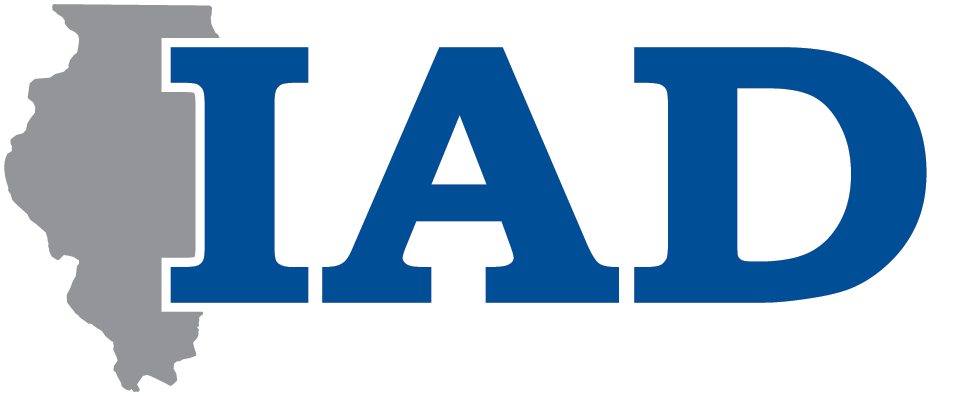The purpose of this position statement is to acknowledge and emphasize the need for increased accessibility in nursing home settings for Deaf and Hard of Hearing residents. The Illinois Association of the Deaf intends to use this position statement to recommend realistic solutions that can be utilized or implemented in senior living facilities to minimize communication barriers and ensure effective communication is achieved for all Deaf and Hard of Hearing residents in nursing homes.
Legal Requirements
Nursing homes are “public accommodations” within the meaning of the ADA, 42 U.S.C. § 12181(7)(F), (K); 28 C.F.R. § 36.104. The ADA prohibits discrimination on the basis of disability in the full and equal enjoyment of the goods, services, facilities, privileges, advantages or accommodations of a public accommodation, 42 U.S.C. § 12182(a); 28 C.F.R. § 36.201(a). As public accommodations, nursing homes have an obligation to provide auxiliary aids and services to ensure effective communication with deaf and hard of hearing residents and their companions pursuant to the ADA regulations, 28 C.F.R. §36.303.
Additionally, nursing homes are classified as a “covered entity” under Section 1557 of the Patient Protection and Affordable Care Act (“Section 1557”), 42 U.S.C. 18116. This requires nursing homes to take appropriate steps to ensure communications with Deaf and Hard of Hearing residents and companions are as effective as communications with others, in accordance with the standards found at 28 C.F.R. §§ 35.160 through 35.164 (the “ADA Title II Communication Standards”). 45 C.F.R. § 92.202(a).
Under the ADA Title II Communication Standards, in determining what types of auxiliary aids and services are necessary to achieve effective communication, the defendant is required to “give primary consideration to the requests of the individuals with disabilities.” 28 C.F.R. § 35.160(b)(2). “Primary consideration” does not require that a person must be provided with the type of auxiliary aid or service he requests, and therefore his request may not be honored if “another effective means of communication exists.” 28 C.F.R. app. § 35.160.
Nursing homes are also subject to nondiscrimination prohibitions of Section 504 of the Rehabilitation Act of 1973, 29 U.S.C. §794, if they receive federal financial assistance (e.g., reimbursement from Medicare and Medicaid programs), which provides that “No otherwise qualified individual with a disability…shall, solely by reason of his or her disability, be excluded from the participation in, be denied the benefits of, or be subjected to discrimination under any program or activity receiving Federal financial assistance….” 29U.S.C.§794(a)
The Department of Justice, in guidance and in settlement agreements with nursing homes, identifies complex and important conversations as “vital encounters.” For those vital encounters, if the patient primarily communicates through American Sign Language (ASL), an on-site interpreter should be utilized to attain effective communication. Specific examples found at …1, 2
Standard Expectations
Nursing homes should make every effort to educate their staff on the provision of appropriate, effective, and quality communication to Deaf and Hard of Hearing individuals in accordance to the aforementioned laws mandating equal access and effective communication. Additionally, all applicable personnel should know how to locate, set up and use the appropriate auxiliary aids and services, as well as provide troubleshooting if problems are encountered.
Upon request, nursing homes shall also provide residents with appropriate flashing alarms, as well as a videophone, captioned telephone and/or an amplified phone. These are considered “auxiliary aids and services” under the ADA, and the nondiscriminatory provisions of the ADA, the Rehabilitation Act and the Affordable Care Act requires nursing homes to not discriminate based upon a person’s disability.
The inability to communicate, including the inability to call a nurse when required, because of the absence of accessible equipment to do so, is in fact discriminatory as it does not provide an equal opportunity for a Deaf or Hard of Hearing resident to participate in the nursing and rehabilitation care of the nursing home as someone who is not Deaf or Hard of Hearing and is able to communicate via the nurse call button and phones available in rooms.
Additionally, nursing homes shall also provide communication support, including sign language interpreting services via qualified sign language interpreters, for all activities upon request. To ensure nursing homes are providing adequate services, nursing home staff shall also conduct comprehensive communication assessments at the first earliest encounter and periodically during the life of a resident.
Lastly, nursing home shall provide information to residents and family members of the comprehensive auxiliary aids and services that are available to them.
Recommendations
The Illinois Deaf and Hard of Hearing Commission, in collaboration with Illinois Association of the Deaf and other organizations representing stakeholders’ interest, shall take the lead in disseminating information to the appropriate governing bodies and nursing homes on a statewide level regarding the respective legal mandates and appropriate solutions to satisfy legal mandates. As part of this effort, the Illinois Accessibility Code needs to be updated, as “Text Telephone/TDD” is an outdated technology. It is pertinent language reflecting the requirement for videophones and other auxiliary aids and services to be provided by public accommodations are added to the Illinois Accessibility Code.
—
Adopted November 17, 2018 by the Illinois Association of the Deaf Board of Directors with great appreciation to the 2017-2019 Nursing Home and Ward of State Committee.
—
Resources
1 ADA Business Brief: Communicating with People Who Are Deaf or Hard of Hearing in Hospital Settings (Oct. 2003) Available at http://www.ada.gov/hospcombr.htm
2 U. S. Department of Health and Human Services, Effective Communication Dear Colleague Letter, August 30, 2016, Available at: https://www.hhs.gov/sites/default/files/ocr-hrsa-effective-communication-dear-colleague-letter.pdf.



